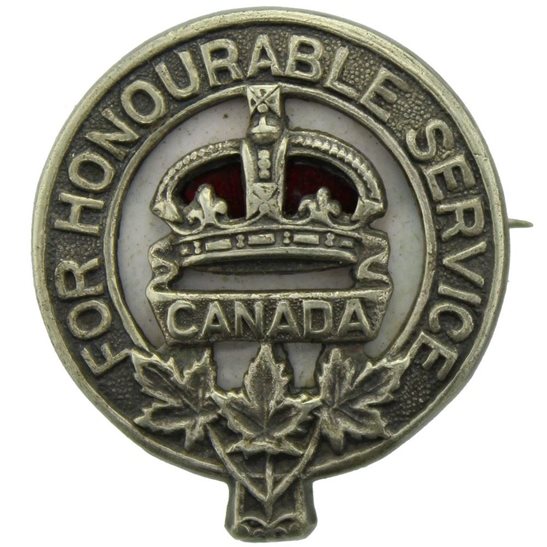Personal Details
Born: 18 July 1885 in Tushingham, Cheshire.
Family: He was the sixth of seven children born to Samuel Taylor, a coachman and his wife Ann. No marriage can be found for him.
Residence: In 1889 his family were living in Tushingham, Cheshire. By 1901 they had moved to Willey Moor, Tushingham. He emigrated to Canada in 1903 and in 1916 when he enlisted in the army his address was 478 Aikins Street, Winnipeg, Manitoba. He was included in the fourth US WW2 draft which meant that he was a US citizen and was living at 1215 Wilcox Avenue, Los Angeles, California.
Employment: In 1901 he was a gardener`s apprentice and in 1916, a shipper. In 1942 he was working for an ice cream company.
Died: 27 January 1948 in Los Angeles.
Military Details
Regiment: Canadian Expeditionary Force (Canadian Army Service Corps.)
Rank: Private
Service Number: 461491
Date of Enlistment: 3 March 1916
Date of Discharge: 30 May 1919
Reason for Discharge: Demobilisation
William was awarded the Campaign medals (Victory and British War Medals) and the Canadian War Service Badge (number 187550)

The British War Medal (also known as 'Squeak') was a silver or bronze medal awarded to officers and men of the British and Imperial Forces who either entered a theatre of war or entered service overseas between 5th August 1914 and 11th November 1918 inclusive. This was later extended to services in Russia, Siberia and some other areas in 1919 and 1920. Approximately 6.5 million British War Medals were issued. Approximately 6.4 million of these were the silver versions of this medal. Around 110,000 of a bronze version were issued mainly to Chinese, Maltese and Indian Labour Corps. The front (obv or obverse) of the medal depicts the head of George V. The recipient's service number, rank, name and unit was impressed on the rim.
The Allied Victory Medal (also known as 'Wilfred') was issued by each of the allies. It was decided that each of the allies should each issue their own bronze victory medal with a similar design, similar equivalent wording and identical ribbon. The British medal was designed by W. McMillan. The front depicts a winged classical figure representing victory. Approximately 5.7 million victory medals were issued. Interestingly, eligibility for this medal was more restrictive and not everyone who received the British War Medal ('Squeak') also received the Victory Medal ('Wilfred'). However, in general, all recipients of 'Wilfred' also received 'Squeak' and all recipients of The 1914 Star or The 1914/1915 Star (also known as 'Pip') also received both 'Squeak' and 'Wilfred'. The recipient's service number, rank, name and unit was impressed on the rim.

The Canadian War Badge was awarded to members of the Canadian Expeditionary Force (CEF) who served in the United Kingdom or at the front, and who, due to old age, wounds or sickness, had retired or relinquished their commissions or been honourably discharged.

